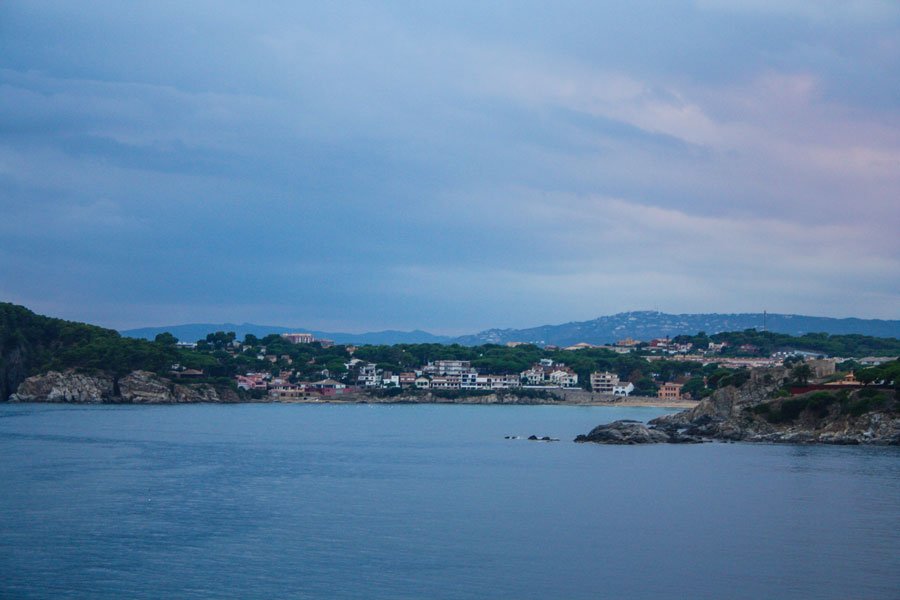As we pointed out in one of our latest post Things you need to know before moving to Barcelona, if you want to explore the most beautiful beaches you will have to drive to Costa Brava. There are lots of “calas” and beautiful beaches in that area, among them one of the most photographed and popular on social networks: Cala s’Alguer.
Cala s’Alguer in Costa Brava
It is probably one of the most famous beaches on Instagram. A little spot with colorful houses of fishermen, which are perfectly displayed with those leafy pine woods on the background. It was declared heritage of cultural interest in 1972.

This little and intimate place has its origins in the sixteenth century, when the symbolic fisherman community decided to call this place home. They used to keep all their fishing gear in these shacks built on the first floor which had these wide wood gates.
Nowadays, far from being the housing of the fishermen community, those little and colorful houses are mainly second residences which are inhabited basically during weekends or holidays.
But how to get there? You must follow what we call “Camí de ronda”, which is the name for the trail which follows the sea from the top of the rocks. In this case, you have to walk the path from La Fosca beach which will lead you to cala s’Alguer. Also, if you keep going you will end up in Castell beach which is also really nice. But what else will you find on the way? Here we detail the main spots
Route from La Fosca to Castell Beach (45′)
La Fosca
The starting point of this route is La Fosca, another beautiful beach on this area. Do you know where its name comes from? The answer lies on the enormous “dark” rock in the middle of this beach, which divides it in two sides: La Fosca beach and Platja del Carrer. Also, this beach hides a legend about a Greek goddess Pyrene, which we challenge you to discover.

Castell de Sant Esteve de Mar
Beside beautiful beaches, you will also encounter a castle: Castell de Sant Esteve de Mar. It is located between La Fosca and Cala s’Alguer. Only a few tower bases and some walls remain nowadays, but it is worth a visit to get an idea of the History hidden on this route. The castle was built on a Roman villa, where there was previously an Iberian settlement.
Pineda d’en Gori
If you go on following the path, you will enter a leafy pine forest, which has an area for picnics. An ideal stop to have lunch or snack!
Remains of an Iberian settlement in Palamós
And more History along the path: you will encounter also the remains of past times. This Iberian settlement was built in the 4th century BC, and it was an important enclave in the trade routes developed around the Greek city of Empúries.
Cala Foradada
On the way from La Fosca beach to Cala s’Alguer, you will bump into another beautiful beach: Cala Foradada. You will get these views from the trail, since its access is mainly by boat or kayak.

If you keep following the path, at some point you will arrive to Cala s’Alguer.
Platja de Castell
After leaving behind Cala s’Alguer, you will reach the final stop: Platja de Castell, also a nice spot. This is more of an open beach, with a “chiringuito” where you can have a drink and rest before walking the way back.

We recommend you to explore this route to discover Cala s’Alguer in Costa Brava and also how a Summer day in la Costa Brava feels like. And then let us know!

